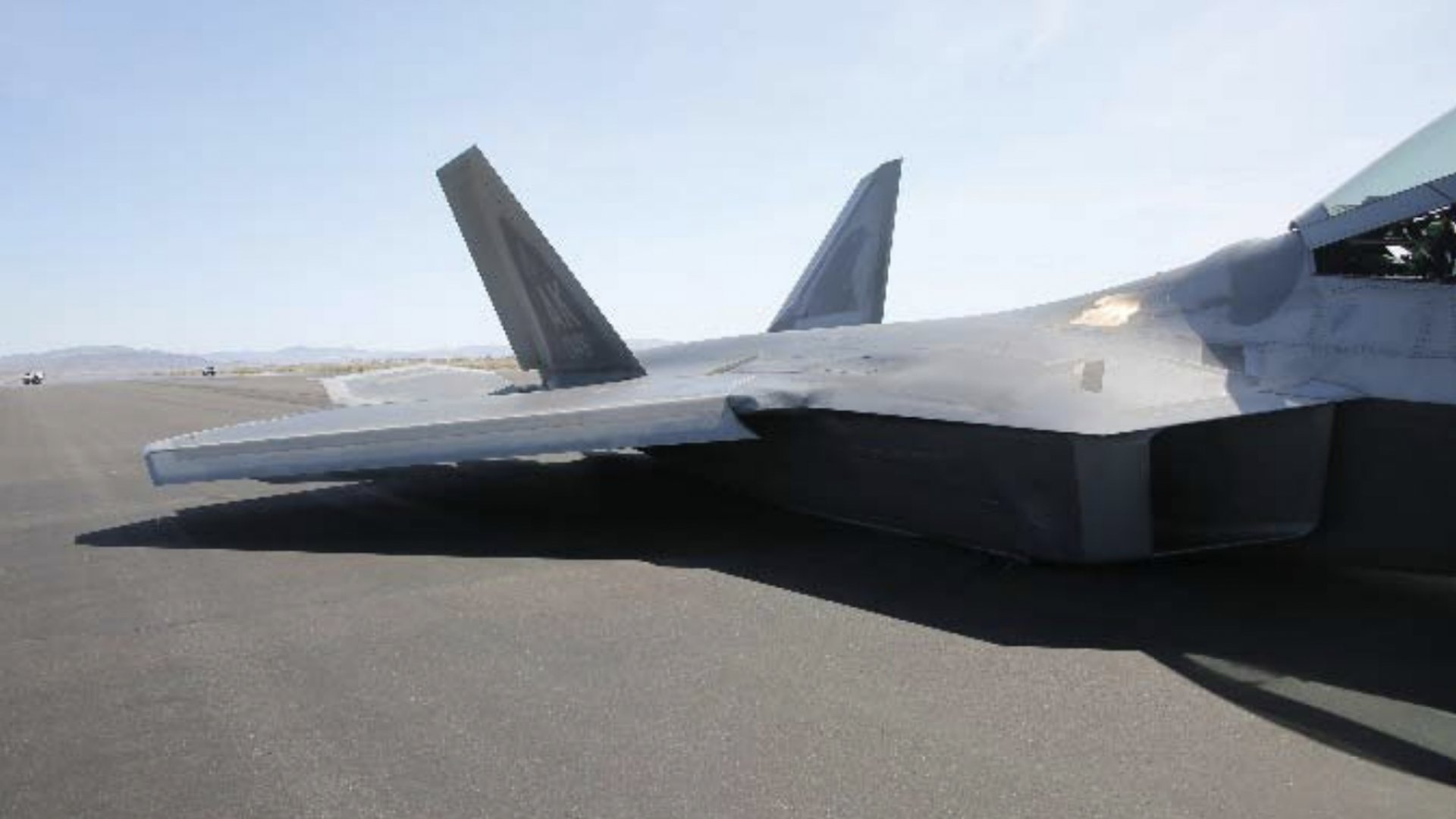

Just over five years after a somewhat embarrassing botched takeoff at a Navy training station, one of the Air Force’s F-22 Raptor fighter jets has finally rejoined the fleet, the service announced last week.
Assigned to the 3rd Wing at Joint Base Elmendorf-Richardson in Alaska, F-22 tail number 07-146 took to the skies on May 4 following a “completion of the long rebuilding process,” according to a press release from JBER, which did not offer any specifics involving the aircraft’s repair process.
“They did a great job on the airplane,” said Lt. Col. Philip Johnson, a functional-check-flight pilot assigned to the 514th Flight Test Squadron at Hill Air Force Base, Utah. Johnson was behind the Raptor’s controls for its return to the air. “There were some minor maintenance notes found during the sortie, but those will be handled by maintenance. It’s good to go back to operational flying.”
Subscribe to Task & Purpose Today. Get the latest military news, entertainment, and gear in your inbox daily.
The rehabilitated F-22 was involved in an April 2018 mishap at Naval Air Station Fallon in Nevada when the pilot retracted the plane’s landing gear too early during takeoff, causing the $140 million-plus aircraft to impact the runway and skid to a halt “with all but the nose landing gear doors fully closed,” according to an Air Force investigation into the incident.
The F-22 was deployed to NAS Fallon to support a graduation exercise for the Navy Strike Fighter Tactics Instructor program (better known as TOPGUN) that has called the Navy training station its home since 1996.
The investigation by the Air Force’s Accident Investigation Board found the pilot used inaccurate Takeoff and Landing Data (TOLD) for the flight conditions due to an “inadequate” flight briefing. As the plane accelerated on the runway, the pilot brought the aircraft’s nose up for takeoff at an airspeed of 120 knots rather than the 136 knots stipulated in the pilot’s lineup card or 143 knots calculated for conditions at NAS Fallon for the day of the takeoff, according to the investigation.
The pilot “failed to apply any corrections to the incorrect TOLD,” according to the investigation.
While the Air Force investigation notes that the F-22 slid approximately 6,514 feet down the runway until it stopped, the report does not detail the total damage to the aircraft.

Following the mishap, airmen spent a month disassembling the F-22 at NAS Fallon for transport back to JBER aboard a C-5 Galaxy aircraft, according to the Air Force.
“We took off everything that was damaged and everything that wouldn’t fit dimensionally,” Staff Sgt. Ethan Rentz, a 3rd Aircraft Maintenance Unit F-22 crew chief, said in December 2021 press release. “We removed the wings and vertical stabilizers, and the whole belly of the F-22 because those panels were damaged and burnt. We couldn’t have those panels flapping around or breaking off during transit.”
Photos released by the JBER public affairs office at the time showed the stripped-down F-22 undergoing its lengthy rebuild at the Alaska base, during the final year of which airmen cannibalized the leading edge, two flaps, and a seat off of a separate F-22 that experienced a mishap at Eglin Air Force Base in Florida in March 2022, according to the service.





Known as the Air Force’s premier air dominance fighter jet, only 187 F-22s were produced by Lockheed Martin, making the restoration of tail number 07-146 to mission-capable status “imperative not only for the 3rd Wing but for the capabilities of the entire U.S. Air Force,” as the JBER press release announcing the aircraft’s return to the skies put it.
“We have a really distinct and important mission when it comes to fifth-generation aircraft and the power we project,” Chief Master Sgt. Adam Willeford, the 3rd Aircraft Maintenance Squadron senior enlisted leader, said in a statement. “Every aircraft in the fleet is highly valuable for mission success, so returning this one to operational status is a big win for the team.”
The latest on Task & Purpose
- Ukraine claims Russian troops and Wagner mercenaries are fighting each other
- Star Wars’ Stormtroopers are a reminder why marksmanship is so important
- Marine veteran killed while evacuating Ukrainian civilians from Bakhmut
- US Army Special Operations Command has its first female senior enlisted leader
- Marine element conducts short-notice air defense deployment to Middle East